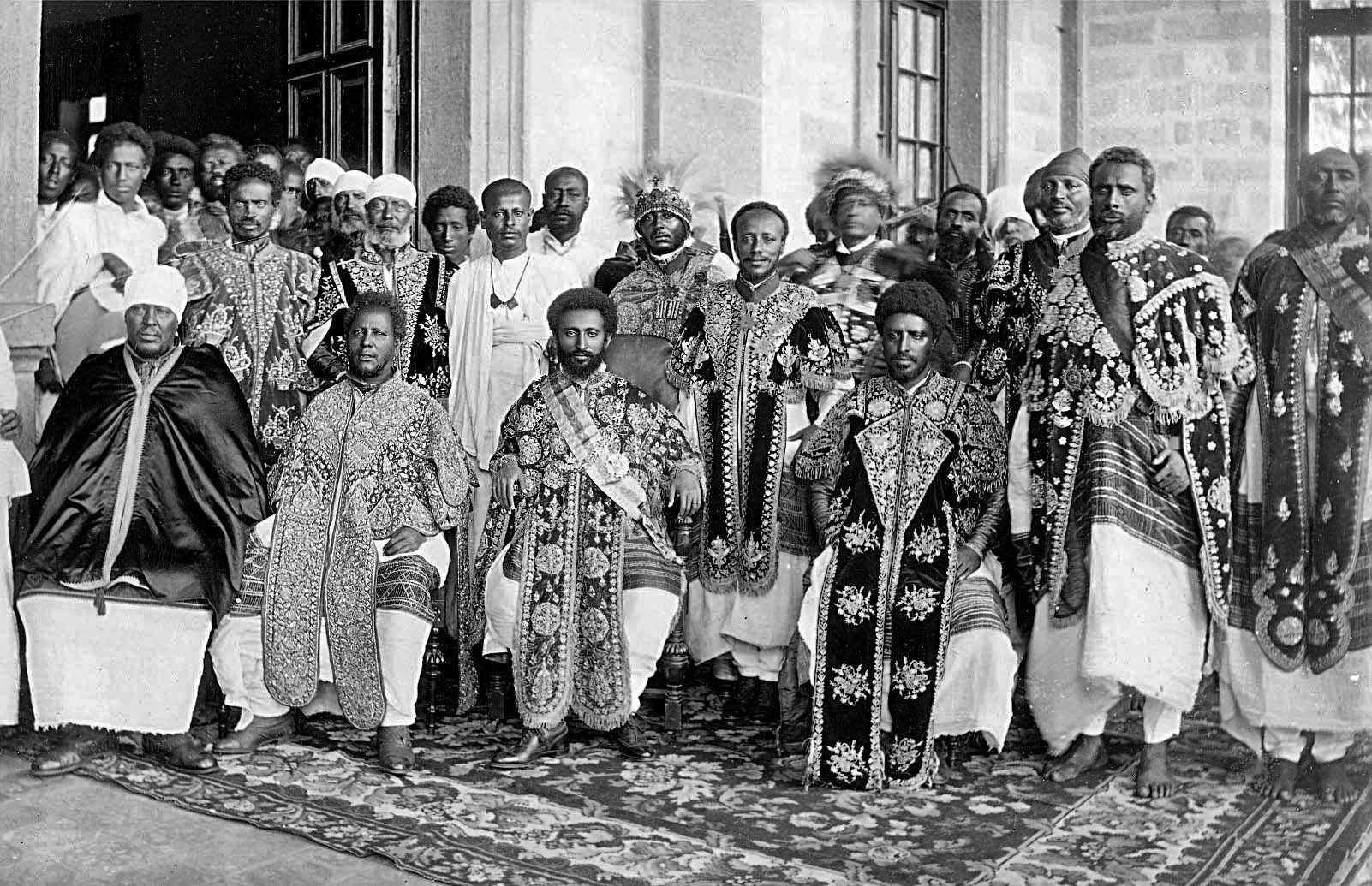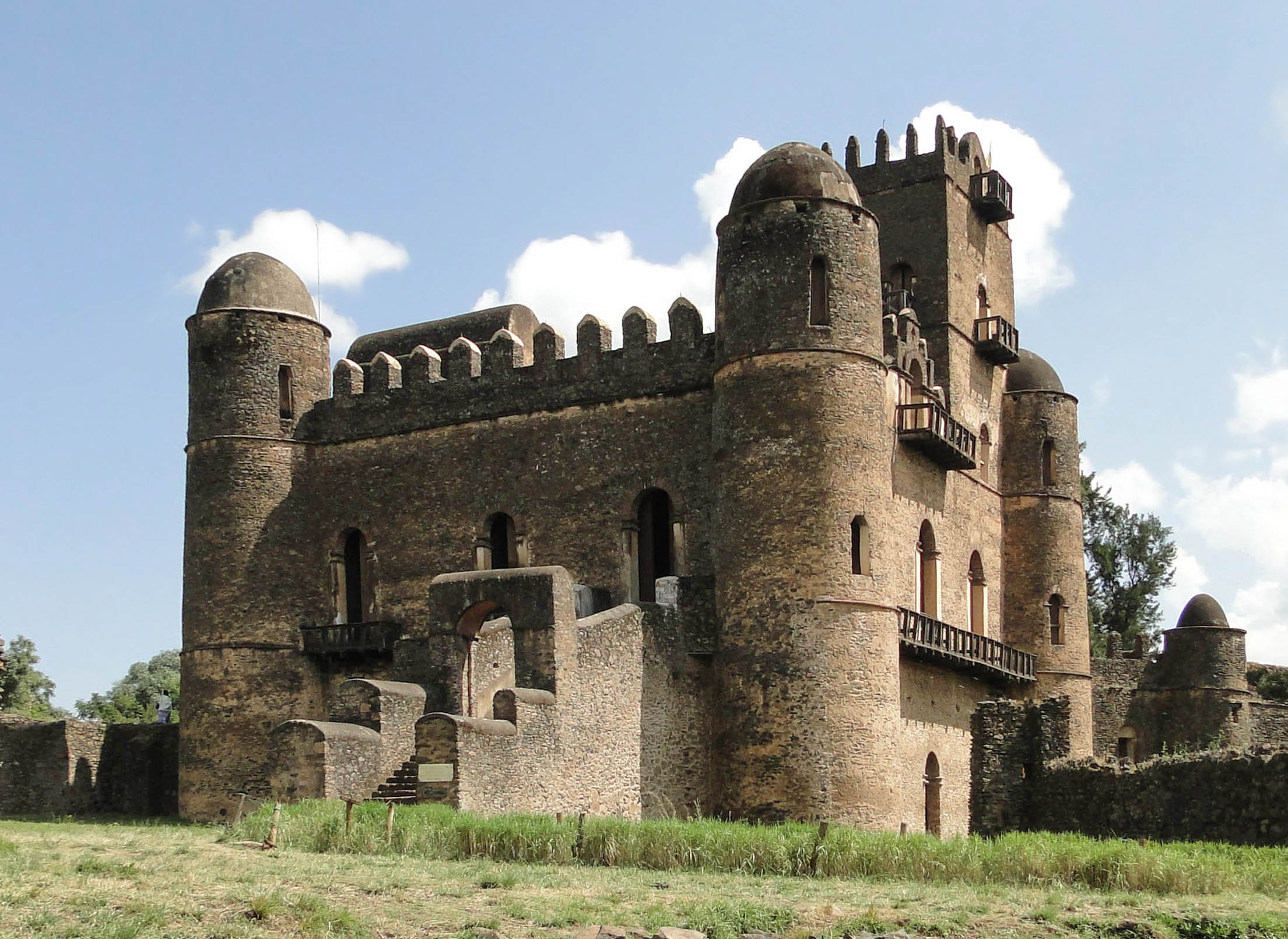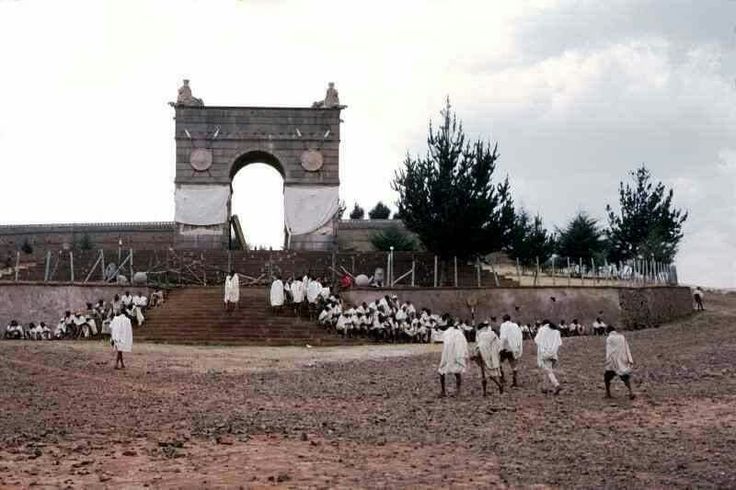|
Fesseha Krestos
Fesseha Krestos (lit: The joy of Christ) was an Ethiopian commander of the royal guard regiment under Iyasu I, he was one of the closest confidants of the Emperor. Biography Fesseha is mentioned for the first time in the chronicle of Emperor Yohannes I with the title of Fitawrari in October 1677. On 15th of July 1682, the ailing Emperor Yohannes I made Iyasu his successor. Fesseha Krestos was among the dignitaries witnessing Yohannes I final proclamation, other notables were Kanafero and Za-Wald (both Azzaz), basha Lesana Krestos, blattengeta Akala Krestos, and the dejazmach's Anestasyos and Delba Iyasus. Emperor Yohannes died on 19 July 1682, and the new monarch Iyasu I, appointed Fesseha Krestos as the regent of Gojjam. He had a brief tenure, as he was summoned to return to Gondar where he was made commander of one the royal guard regiments. In 1689, angered by the massacre of Christians by the northerly Shankellas in the Shire desert, Iyasu I despatched Fesseha, wh ... [...More Info...] [...Related Items...] OR: [Wikipedia] [Google] [Baidu] |
Iyasu I
Iyasu I ( Ge'ez: ኢያሱ ፩; 1654 – 13 October 1706), throne name Adyam Sagad (Ge'ez: አድያም ሰገድ), also known as Iyasu the Great, was Emperor of Ethiopia from 19 July 1682 until his death in 1706, and a member of the Solomonic dynasty. Described as the last “great” Gondarine monarch, Iyasu temporarily halted the trend of decline through his brilliance as a military leader, reestablishing control over rebellious vassals and conquering areas to the south of his domain. In addition to his military and political exploits, Iyasu was a patron of architecture, arts and literature. He also attempted to settle doctrinal differences within Ethiopia's Coptic Church, but without long-lasting success. Iyasu was deposed by his own son Tekle Haymanot I in 1706 and assassinated by the relatives of one of his concubines. A series of ineffectual emperors followed and imperial power declined until the advent of Tewodros II in the middle of the nineteenth century. Early life A ... [...More Info...] [...Related Items...] OR: [Wikipedia] [Google] [Baidu] |
Wehni
Wehni () is the name of one of the mountains of Ethiopia where most of the male heirs to the Emperor of Ethiopia were interned, usually for life. It was the last of the three such mountains, or ''amba (geology), amba'', said to have been used for that purpose, the other two being Debre Damo and Amba Geshen. From some undetermined time in history, it was the custom that when the Emperor assumed the throne, his brothers and other male relatives would be taken to a royal prison, where they would live until either they were called forth to become the new emperor or died. Mount Wehni was first used as a prison by Fasilides of Ethiopia, Fasilides, when he exiled his son Dawit there for leading a revolt. The mountain was abandoned as a prison during the Zemene Mesafint; more precisely in the 1790s, as Samuel Gobat learned from one Tekla Selassie, "a relative of the king" (that is, the Emperor of Ethiopia). Although James Bruce first mentions the existence of the royal prison at Wehni, ... [...More Info...] [...Related Items...] OR: [Wikipedia] [Google] [Baidu] |
Tekle Haymanot I
Tekle Haymanot I (), throne name Le`al Sagad (Ge'ez: ለዓለ ሰገድ, 28 March 1684 – 30 June 1708) was Emperor of Ethiopia from 27 March 1706 until his death in 1708, and a member of the Solomonic dynasty. He was the son of Iyasu I and Empress Malakotawit. He is often referred to as "Irgum Tekle Haymanot" or "Tekle Haymanot the Cursed". Background Tekle Haymanot I was a son of Emperor Iyasu I by one of his concubines named Malakotawit. Malakotawit was later given the title of ''Etage'' or ''Itege'', meaning "Empress", during the reign of her son. She was crowned at Gondar. Tekle Haymanot I had several half siblings as his father sired with several concubines. His half brothers who ascended the throne were Dawit III, Bakaffa and Yohannes II. Reign Tekle Haymanot became Emperor following Iyasus' retirement to an island in Lake Tana. With the support of his mother Empress Malakotawit, some of the officials argued that Iyasu had abdicated, and crowned Tekle Haymanot ... [...More Info...] [...Related Items...] OR: [Wikipedia] [Google] [Baidu] |
Dejazmach
Until the end of the Ethiopian monarchy in 1974, there were two categories of nobility in Ethiopia and Eritrea. The Mesafint ( , modern transcription , singular መስፍን , modern , "prince"), the hereditary royal nobility, formed the upper echelon of the ruling class. The Mekwanint ( , modern , singular መኰንን , modern or , "officer") were the appointed nobles, often of humble birth, who formed the bulk of the aristocracy. Until the 20th century, the most powerful people at court were generally members of the ''Mekwanint'' appointed by the monarch, while regionally, the ''Mesafint'' enjoyed greater influence and power. Emperor Haile Selassie greatly curtailed the power of the ''Mesafint'' to the benefit of the ''Mekwanint'', who by then were essentially coterminous with the Ethiopian government. The ''Mekwanint'' were officials who had been granted specific offices in the Abyssinian government or court. Higher ranks from the title of ''Ras'' descending through to ''B ... [...More Info...] [...Related Items...] OR: [Wikipedia] [Google] [Baidu] |
Eritrea
Eritrea, officially the State of Eritrea, is a country in the Horn of Africa region of East Africa, with its capital and largest city being Asmara. It is bordered by Ethiopia in the Eritrea–Ethiopia border, south, Sudan in the west, and Djibouti in the southeast. The northeastern and eastern parts of Eritrea have an extensive coastline along the Red Sea. The nation has a total area of approximately , and includes the Dahlak Archipelago and several of the Hanish Islands. Hominid remains found in Eritrea have been dated to 1 million years old and anthropological research indicates that the area may contain significant records related to the evolution of humans. The Kingdom of Aksum, covering much of modern-day Eritrea and Tigray Region, northern Ethiopia, was established during the first or second century AD.Henze, Paul B. (2005) ''Layers of Time: A History of Ethiopia'', . It adopted Eritrean Orthodox Church, Christianity around the middle of the fourth century. Beginning in ... [...More Info...] [...Related Items...] OR: [Wikipedia] [Google] [Baidu] |
Mareb River
The Mareb River (), also known as the Gash River (), is a river flowing out of central Eritrea. Its chief importance is defining part of the boundary between Eritrea and Ethiopia, between the point where the Mai Ambassa enters the river at to the confluence of the Balasa with the Mareb at . Course According to the ''Statistical Abstract of Ethiopia for 1967/68'', the Mereb River is long. The Ethiopian Ministry of Water Resources reports its Ethiopian catchment area as , with an annual runoff of 0.26 billion cubic meters. Other sources talking about a catchment of to over all, and a discharge of in average over the year, and in peaks. Its headwaters rise south-west of Asmara in central Eritrea. It flows south, bordering Ethiopia, then west through western Eritrea to reach the Sudanese plains near Kassala. Unlike the Setit or Takazze rivers, which flow out of Ethiopia and also forms a natural border with Eritrea, the waters of the Mareb do not usually reach the Nile but ... [...More Info...] [...Related Items...] OR: [Wikipedia] [Google] [Baidu] |
Shire (Tigray)
Shire (, ; , ), also known as Shire Inda Selassie (, meaning "House of the Trinity"), is a city and separate woreda in the Tigray Region of Ethiopia. The city is the administrative center of the Shire Awraja, Mi erabawi Zoba and now Semien Mi'irabawi Zone. It was part of Tahtay Koraro district. History Origin An early mention of Shire is in one of the three surviving charters of Emperor Dawit I (r. 1382–1412). 16th century The metropolis was a tributary state of Adal and governed by the Christian, Diganah. 20th century As part of the Second Italo-Ethiopian War, Italian units under General Pietro Badoglio advanced out of Axum on 29 February 1936 to attack the Ethiopian army under ''Ras'' Imru Haile Selassie deployed around Shire in an action known as the Battle of Shire. Despite determined Ethiopian resistance, by 3 March the Italians had resumed their advance and shortly afterwards crossed the Tekezé River. After the restoration of the monarchy in 1941, Shire ... [...More Info...] [...Related Items...] OR: [Wikipedia] [Google] [Baidu] |
Shankella
Shanqella (Amharic: ሻንቅላ, šanqəlla—also spelled Shankella, Shangella, Shankalla, or Shangalla) was first the name of a single Nilotic-speaking community on Ethiopia's western frontier, but it gradually broadened into a catch-all label for many small, politically decentralized peoples who lived along the Ethiopian-Sudanese borderlands, (modern Gambela and Benishangul-Gumuz regions), including the Bareya of what is now western Eritrea. Lacking strong centralized institutions and residing far from the highland heartland, these groups were militarily weaker; their darker skin tone, non-Christian, and distinct cultural practices marked them as "others" in Abyssinian eyes, making them especially attractive targets for slave raiders. Because the Shanqella and Bareya were the two frontier communities most commonly raided, their names themselves eventually became synonyms for slave. In this way, notions of darkness and servility fused: to be visibly darker and from a loosely o ... [...More Info...] [...Related Items...] OR: [Wikipedia] [Google] [Baidu] |
Gondar
Gondar, also spelled Gonder (Amharic: ጎንደር, ''Gonder'' or ''Gondär''; formerly , ''Gʷandar'' or ''Gʷender''), is a city and woreda in Ethiopia. Located in the North Gondar Zone of the Amhara Region, Gondar is north of Lake Tana on the Lesser Angereb River and southwest of the Simien Mountains. , Gondar has an estimated population of 443,156. Gondar previously served as the capital of both the Ethiopian Empire and the subsequent Begemder Province. The city holds the remains of several royal castles, including those in the Fasil Ghebbi UNESCO World Heritage Site for which Gondar has been called the " Camelot of Africa". History Origins The term Gondar was first mentioned during the reign of Amda Seyon I as the name of a regiment of soldiers stationed (likely in Wegera) to guard nearby trade routes and control a restive population. In 1636, Emperor Fasilides selected Gondar as his '' katama'' (royal camp). Situated about 35 km due north of Lake Tana in t ... [...More Info...] [...Related Items...] OR: [Wikipedia] [Google] [Baidu] |
Gojjam
Gojjam ( ''gōjjām'', originally ጐዛም ''gʷazzam'', later ጐዣም ''gʷažžām'', ጎዣም ''gōžžām'') is a historical provincial kingdom in northwestern Ethiopia, with its capital city at Debre Markos. During the 18th century, Gojjam's western neighbors were Agawmeder in the southwest and Qwara in the northwest. Agawmeder, never an organized political entity, was gradually absorbed by Gojjam until it reached west to the Sultanate of Gubba; Juan Maria Schuver noted in his journeys in Agawmeder (September 1882) that in three prior months, "the Abyssinians considerably advanced their frontier towards the West, effacing what was left of the independent regions." Gubba acknowledged its dependence to Emperor Menelik II in 1898, but by 1942 was absorbed into Gojjam. Dek Island in Lake Tana was administratively part of Gojjam until 1987. The capital city is Bahir Dar. History The earliest recorded mention of Gojjam was during the medieval period, in a note in a ... [...More Info...] [...Related Items...] OR: [Wikipedia] [Google] [Baidu] |
Anestasyos
Anestasyos (died 2 August 1688), was one of the most prominent figures of 17th-century Ethiopia. He held several positions during the reigns of Fasilides, Yohannes I and Iyasu I. The latter relied on Anestasyos military prowess and made him Ras Bitwoded. Over the course of his career he became the provincial governor of Amhara, Damot, Semien and Shewa. Biography Anestasyos was the son of Ras Yolyos by princess Malakotawit, daughter of the Solomonic Amhara Emperor Susenyos. His father, Yolyos was recognized and remembered as an Orthodox Christian martyr, following Susenyos abdication and the restoration of Ethiopian Orthodox Tewahedo Church in 1632. Anestasyos therefore seemed to have been favored by his uncle, Emperor Fasilides, who was a devout Orthodox Christian. Anestasyos attained the title of Dejazmach during his reign. During Yohannes I reign, Dejazmach Anestasyos was the governor of Semien Province with the honorific title of Aggafari. On 15 July 1682, the ailin ... [...More Info...] [...Related Items...] OR: [Wikipedia] [Google] [Baidu] |





